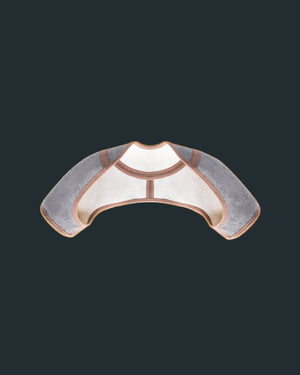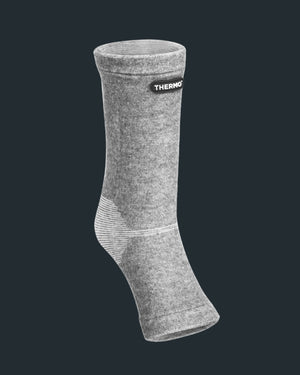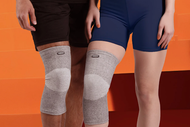Struggling with poor circulation? Learn how to increase blood flow to feet for diabetics with our user-friendly guide packed with actionable tips.
Living with diabetes often means confronting a range of potential health issues. One area that can be particularly affected is your feet due to poor blood circulation. Knowing how to increase blood flow to feet for diabetics is crucial in managing these conditions.
In this article, we will explore the link between diabetes and poor circulation, the potential complications it can lead to, and practical strategies to enhance blood flow. Our aim is to ensure you have the knowledge to manage your foot health effectively and prevent any further complications.
Understanding Poor Circulation in Diabetics
Poor circulation is a prevalent issue among people with diabetes due to the chronic high blood glucose levels that characterize this condition. Over time, these elevated glucose levels can cause significant damage to both the blood vessels and nerves, especially in the extremities, like the feet.
When blood vessels are damaged, they harden and narrow, a condition known as atherosclerosis. This impedes the free flow of blood throughout the body, leading to poor circulation. Nerve damage can also lead to a range of diabetes-related foot problems like peripheral arterial disease.
Consequences of Poor Blood Circulation to Feet for Diabetics
Decreasing blood flow on your feet can have widespread and severe impacts on diabetics. It may manifest as cold feet or numbness, tingling, or burning sensations, also known as peripheral neuropathy. These symptoms often worsen at night, affecting sleep.
Over time, poor circulation can lead to slower healing of cuts and sores on the feet due to inadequate delivery of oxygen and nutrients to the wound. This increases the risk of infections and ulcers, which can sometimes become serious, requiring hospitalization or even amputation in extreme cases.
Due to inadequate blood flow, the skin on the feet becomes dry and cracked, further increasing the risk of infection. Minimal blood flowing to your feet also leads to changes in color and temperature. In advanced stages, foot pain, even while resting or walking (claudication), will impact mobility.
How to Increase Blood Flow to Feet for Diabetics: The Core Strategies
Step 1. Exercise Regularly to Boost Circulation
One of the most effective methods to increase blood flow is regular physical activity. Aim for at least 30 minutes of moderate exercise most days of the week, whether it’s walking, swimming, or cycling.
Here are some specific exercises that diabetics can perform to improve blood flow:
- Walking: This simple and low-impact exercise can significantly enhance circulation without placing undue stress on your feet.
- Cycling: Riding a stationary or traditional bicycle helps stimulate blood flow and is gentle on the feet.
- Swimming: As a non-weight-bearing exercise, swimming keeps blood flowing well while minimizing pressure on the feet.
- Leg Lifts: While seated or lying down, lift each leg in the air, holding for a few seconds before lowering it gently. This helps boost circulation in the lower extremities.
- Toe Taps: While sitting, simply lift your heels and tap your toes on the ground rapidly. This can stimulate blood flow to your feet and lower legs.
- Ankle Rotations: Rotate your ankles clockwise and then counter-clockwise. It is a simple but effective exercise to maintain a healthy ankle blood pressure.
Step 2. Invest in Proper Nutrition
Paying attention to your diet is another critical step in preventing poor circulation, especially to your feet. Here are some nutritional tips for diabetics aiming to enhance circulation:
- Incorporate Omega-3 Fatty Acids: Foods like fatty fish (salmon, mackerel, sardines), flaxseeds, walnuts, and chia seeds are rich sources of omega-3 fats, which are known to support heart health and improve blood circulation.
- Eat More Fiber: Consuming plenty of fiber can help regulate your blood sugar levels and lower the risk of heart disease. Good sources include fruits, vegetables, whole grains, and legumes.
- Include Garlic in Your Diet: Garlic has been found to have blood-thinning properties, which can help boost circulation.
- Limit Saturated and Trans Fats: These can increase your cholesterol levels and lead to buildup in your arteries, affecting circulation. They are often found in processed foods, baked goods, and fatty cuts of meat.
- Avoid Excess Salt: Too much salt can lead to high blood pressure, which can impair circulation. Try to limit your intake and opt for low-sodium versions of foods.
- Focus on Antioxidant-Rich Foods: Fruits and vegetables rich in antioxidants can prevent damage to your blood vessels and improve overall blood flow.
- Control Your Blood Sugar Levels: Monitor your carbohydrate intake and practice portion control to maintain steady blood sugar levels, which can mitigate damage to your blood vessels and nerves.
Are you on post-recovery? Check out these food essentials to try out this 2024.
Step 3. Staying Hydrated
Proper hydration plays a crucial role in maintaining good blood flow. Staying adequately hydrated helps in thinning the blood, facilitating easier circulation throughout the body, including the feet.
Step 4. Consult Your Doctor for Medication and Therapies
Consulting your healthcare provider is crucial when dealing with poor blood circulation as a diabetic. They will assess your condition and prescribe medications, such as antiplatelet or anticoagulant drugs, to improve blood flow. They may also suggest physical therapy with specific exercises to boost circulation to your feet.
The Role of Routine Foot Care in Increasing Blood Flow
Importance of Regular Foot Checks
Regular foot checks are an essential part of preventative foot care for diabetics. During regular foot checks, you start by visually inspecting your feet for any noticeable changes such as cuts, sores, blisters, swelling, or nail problems. This includes checking areas like the soles and the spaces between your toes.
You also need to feel for any temperature changes, numbness, or pain, which may signal potential issues. It’s crucial to examine the structure of your feet for any changes in shape that might indicate bone or joint problems.
Footwear: A Key Factor in Diabetic Foot Health
When choosing shoes, opt for those that are comfortable, well-fitted, and provide ample room for your toes to move. Clunky, tight, or high-heeled shoes can restrict blood flow and lead to issues like foot ulcers.
Look for shoes with good arch support and cushioning to relieve pressure on your feet. Always try on shoes with the same socks you plan to wear regularly to ensure a proper fit. Never walk barefoot, even indoors, to avoid injury.






